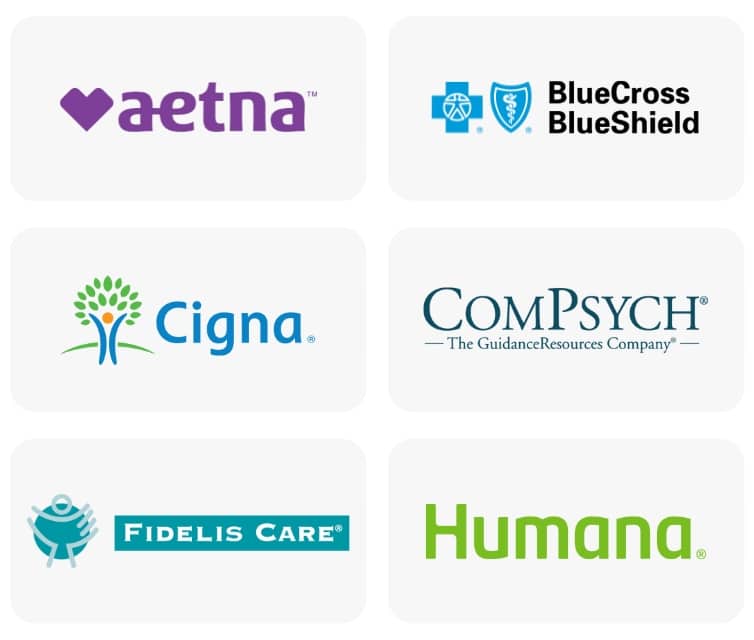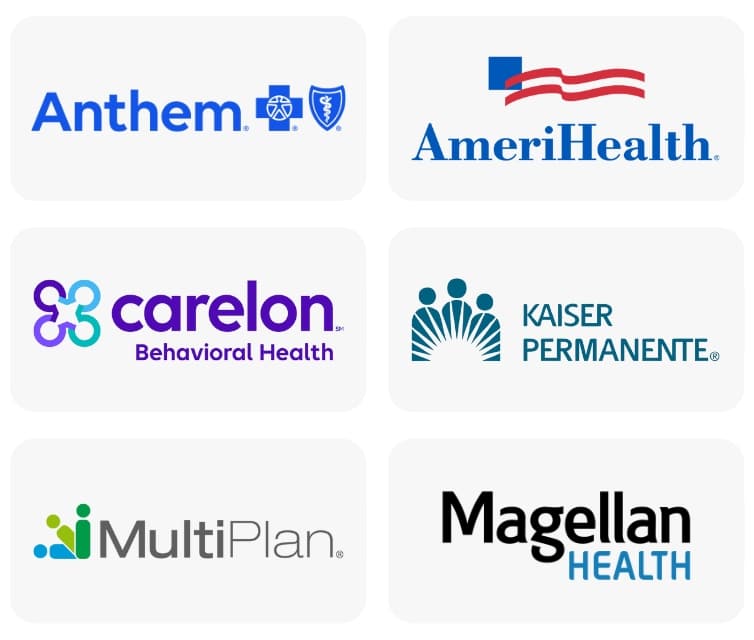Skip To Section
Navigating the complex world of drug addiction can be an overwhelming journey, whether you’re grappling with addiction yourself, concerned about a loved one, or seeking to broaden your understanding of this critical issue.
At Footprints to Recovery, our goal is to provide insightful information that empowers individuals and families to make informed decisions about addressing drug addiction while fostering hope, healing, and resilience in recovery. We believe that the more you know about how addictions work and how they are treated, the more effective your recovery will be.
That is why our guide to drug addiction seeks to cover the the intricacies of addiction, recovery, and beyond. To accomplish this, our comprehensive resource covers topics including:
- Drugs linked to addiction and dependence.
- How addictions develop.
- What addictions look like.
- Risks associated with addiction.
- Statistics relating to addiction.
- How you can help someone in need.
By learning about the causes and consequences of drug dependency, the psychological and physical facets of addiction, and effective strategies for treatment, you can make an informed decision about your own recovery or support a loved one in their sober journey.

How Does Drug Addiction Start?
Drug addiction is a complex issue that affects millions of people around the world. It can stem from various factors, such as genetics, environmental influences, and personal experiences. While some individuals may have a higher vulnerability to develop an addiction, anyone can be affected by drug dependence.
Drug addiction typically arises from changes in brain chemistry. Each dose of a drug affects areas of the brain that control memory, reward, and decision-making. Over time, these small changes accumulate, making it increasingly difficult to make healthy choices regarding drug use.
At the same time, people build up habits that support drug use. They often find new friends, learn drug lingo, and buy paraphernalia to support their drug abuse. These changes all contribute to drug abuse and make quitting harder too.
What Drugs Are Commonly Associated With Addiction?
Think of addiction as a process. A predictable set of steps leads to brain cell changes and compulsive use. One of those steps involves physical dependence.
Drugs cause a massive release of brain chemicals, and that flood can burn out receptors and lower receptivity. The result: You need to take more of the drug to feel the same high. Keep going, and you’ll need the drug to stave off withdrawal and sickness.
This is physical dependence, and as the National Institute on Drug Abuse (NIDA) points out, it’s not the same as addiction. Someone can be dependent on a prescription medication taken on a doctor’s orders without ever feeling compulsively drawn to take it. However, it is important to remember that dependence often goes hand in hand with addiction.
When people talk about drugs with a high addiction risk, they typically mention substances that cause physical and psychological dependence, such as:
- Alcohol: Shaking hands, sweating, and hallucinations hit heavy drinkers when they try to quit.
- Opioids: Flu-like symptoms and heavy cravings strike within a few hours of the last hit.
- Cocaine: Severe depression and intense cravings follow a long binge.
- Marijuana: New research from NIDA suggests heavy users develop irritability, insomnia, and cravings when they try to quit.
Some substances aren’t closely linked to dependence. Hallucinogens, including psilocybin mushrooms, and some designer drugs like bath salts haven’t been conclusively linked to this issue. Even so, some people can become enchanted by these substances, and they can take them repeatedly. Some also claim that they can’t stop taking them, even though they want to.
What Are The Different Types of Drug Addiction?
Drug addiction is characterized by chronic substance abuse to achieve an altered state of consciousness or perception. This type of addiction often involves intense cravings for drugs or alcohol, even when there are clear negative effects. As a result, drug addiction can have devastating physical, psychological, and social consequences.
The most common types of drug addiction include:
- Opioids (such as heroin and prescription painkillers),
- Stimulants (such as cocaine and methamphetamine)
- Sedatives (such as benzodiazepines)
- Marijuana
Opioid Addiction
Opioids are a class of drugs that are commonly used for pain relief. They work by binding to receptors in the brain and spinal cord, blocking the transmission of pain signals. However, they can also produce euphoric effects, making them highly addictive.
Many people who use opioids for legitimate medical purposes can become dependent on them if they take them for an extended period of time. This is because the body can develop a tolerance to the drug, requiring higher doses to achieve the same level of pain relief. As a result, individuals may start taking more than prescribed or seek out stronger opioids to experience the desired effects.
Unfortunately, this misuse and overuse of opioids has led to a widespread epidemic of addiction and overdose deaths. In fact, according to the Centers for Disease Control and Prevention (CDC), more than two million Americans suffered from opioid use disorder in 2018, with over 47,000 deaths involving opioids.
Commonly abused opioids include:
- Heroin
- Fentanyl
- Prescription pain killers
Abusing opioids can cause a variety of harmful, potentially life-threatening side effects such as:
- Drowsiness
- Confusion
- Nausea
- Vomiting
- Constipation
- Respiratory depression
- Overdose
If you or someone you know is struggling with opioid addiction, seeking help from a treatment center or healthcare provider is essential.
Heroin Addiction
Heroin is an illegal, highly addictive drug. It is a processed form of opium, which comes from the poppy plant. Heroin is usually a white or brown powder. It can also be a black sticky substance known as “black tar heroin.”
It is typically:
- Injected
- Sniffed
- Smoked
People who use heroin often develop a tolerance to the drug quickly. This means they need to use more of it to get the same effect. This can fuel drug seeking and use despite harmful consequences. People with opioid addictions often have great difficulty quitting on their own. Many require time in a residential treatment center to recover from heroin abuse.
Prescription Painkiller Addiction
Prescription painkillers are a type of medication for moderate to severe pain relief. They work by binding to certain receptors in the brain and spinal cord. This reduces your perception of pain. Prescription painkillers can be effective at treating pain, but they also carry a risk of addiction and overdose. When taken as prescribed, painkillers are relatively safe. When they are misused or taken in large doses, they can be highly addictive.
Commonly abused prescription pain killers include:
- Fentanyl
- Oxycodone (OxyContin)
- Hydrocodone (Vicodin)
- Hydromorphone (Dilaudid)
- Codeine
- Morphine
Symptoms of an addiction to painkillers may include:
- Taking the medication more often or in higher doses than prescribed
- Experiencing withdrawal symptoms when not taking the drug
- Neglecting other obligations because of drug misuse
- Taking the medication with other drugs or alcohol to enhance its effects
Fentanyl Addiction
Fentanyl is a powerful synthetic opioid that is up to 100 times more potent than morphine. It’s typically prescribed for severe pain, such as that associated with cancer. But fentanyl is also used illegally. Its high potency makes it especially dangerous. When misused, fentanyl can lead to opioid addiction and overdose.
Fentanyl works by binding to opioid receptors in the brain. This reduces pain and can produce a sense of euphoria. However, repeated use of fentanyl can cause the brain to become tolerant to the drug. You require higher doses to achieve the same effects. This can quickly lead to addiction. People who are addicted to fentanyl may experience withdrawal symptoms if they try to stop taking the drug. These fentanyl withdrawal symptoms can include:
- Anxiety
- Muscle aches
- Diarrhea
- Headache
- Sweating
- Chills
- Insomnia
Treatment for fentanyl addiction typically includes medication and behavioral therapy.
Stimulant Addiction
Stimulant addiction is a growing problem in today’s society. Stimulant abuse can involve the misuse or overuse of illicit and prescription drugs. Substances in the stimulant drug class are highly addictive and can have serious consequences on a person’s physical and mental health.
The use of stimulants often begins innocently enough, with individuals using them to increase alertness, improve focus, or enhance performance. However, over time, this occasional use can turn into a dangerous addiction. The line between recreational use and abuse is often blurred when it comes to stimulants.
Commonly abused stimulants include:
- Cocaine
- Methamphetamine
- Prescription amphetamines
The effects of stimulant addiction can be devastating, both physically and mentally. These drugs can cause a variety of harmful side effects such as increased heart rate, high blood pressure, insomnia, anxiety, and even psychosis.
Meth Addiction
Methamphetamine is a powerful and highly addictive stimulant that affects the central nervous system. The drug is commonly known as:
- Meth
- Speed
- Crystal meth
- Crank
Meth is typically sold as a white or translucent powder that can be snorted, smoked, or injected. The effects of meth include:
- Increased energy and alertness
- Decreased appetite / weight loss
- Euphoric rush
Meth users often become addicted after just one use. This is because the drug creates a strong sense of pleasure and well-being. However, the short-term effects of meth are quickly replaced by negative consequences such as:
- Anxiety
- Paranoia
- Hallucinations
Long-term meth use can lead to serious health conditions such as:
- Kidney damage
- Heart failure
- Stroke
Treatment for meth addiction typically involves a combination of drug detox, counseling, and medication.
Cocaine Addiction
Cocaine is an illegal drug and powerful stimulant made from the leaves of the coca plant. It is usually sold as a white powder that can be:
- Snorted
- Smoked
- Injected
Cocaine produces a short-lived, intense feeling of euphoria followed by feelings of restlessness, paranoia, and anxiety. Over time, cocaine abuse can lead to:
- Addiction
- Heart attack
- Stroke
- Seizure
Cocaine addiction usually requires treatment from addiction and medical professionals.
Amphetamine Addiction
Amphetamines are a type of stimulant drug that can be highly addictive when used incorrectly. They are typically prescribed for medical conditions such as attention deficit hyperactivity disorder (ADHD) and narcolepsy, but they are also commonly abused as a recreational drug.
The use of amphetamines can lead to both short-term and long-term effects on the body. Short-term effects may include:
- More energy
- Heightened focus
- Increased alertness
- Improved mood
- Feelings of euphoria
Long-term effects may include:
- Changes in brain chemistry
- Heart problems
- Addiction
When taken in excessive amounts or for extended periods of time, amphetamines can cause various health issues.
Side effects of amphetamine abuse include:
- Anxiety
- Depression
- Paranoia
- Psychosis
- High blood pressure
- Rapid heart rate
- Irregular heartbeat
- Insomnia
- Weight loss
- Stroke
- Heart attack
If you or someone you know is struggling with amphetamine abuse, it is important to seek help from a medical professional.
MDMA Addiction
MDMA is a synthetic drug that acts as a stimulant and hallucinogen. It is also known as:
- Ecstasy
- Molly
- Beans
- X
- Love Drug
MDMA increases the activity of three neurotransmitters in the brain:
- Serotonin
- Dopamine
- Norepinephrine
This produces feelings of euphoria, increased energy, and empathy. It can also lead to anxiety, paranoia, and sleep problems. When people stop using MDMA, they may experience depression, anxiety, and memory problems. Some people also develop tolerance to the drug, which means they need to take higher doses to achieve the desired effect.
Benzodiazepine Addiction
Benzodiazepines are a class of psychoactive drugs used to treat anxiety, insomnia, and other related disorders. They work by enhancing the effects of gamma-aminobutyric acid (GABA), a neurotransmitter that helps to calm down the activity of nerve cells in the brain.
Benzodiazepine medications are commonly prescribed for short-term use due to their potential for addiction and abuse. However, many individuals may find themselves relying on these drugs for longer periods of time, leading to physical and psychological dependence.
Commonly abused benzodiazepines include:
- Xanax
- Valium
- Ativan
- Klonopin
These drugs can provide temporary relief from symptoms such as panic attacks, muscle tension, and sleep disturbances. However, long-term use can lead to tolerance, meaning that higher doses are needed to achieve the same effect. This can increase the risk of adverse side effects and even death.
Abruptly stopping benzodiazepines can result in life-threatening withdrawal symptoms. Therefore, it is important for individuals who have been taking these drugs long-term to gradually taper off under medical supervision in a benzo detox program.
If you or someone you know is struggling with benzodiazepine addiction or dependence, seeking professional help is crucial.
Xanax Addiction
Xanax is a prescription medication used to treat anxiety and panic disorders. It is classified as a benzodiazepine, which acts on the central nervous system to produce a calming effect. Xanax works by increasing the levels of a neurotransmitter called gamma-aminobutyric acid (GABA) in the brain, which reduces excitability and promotes relaxation.
However, it is important to understand that Xanax is not a long-term solution for anxiety and should only be used under the guidance of a healthcare professional.
This is in part due to the various side effects of Xanax, such as:
- Drowsiness
- Dizziness
- Headaches
- Confusion
- Blurred vision
- Memory problems
These side effects can impact daily activities and make it difficult for individuals to function normally.
Even still, the main concern associated with using Xanax is its potential for abuse and addiction. This drug can be habit-forming, especially if taken in large doses or for an extended period of time. It is also easy to develop a tolerance to the drug, meaning that higher doses may be needed to achieve the same level of relief. As this pattern continues, people can develop an addiction to Xanax.
It’s important to note, abruptly stopping the use of Xanax can lead to serious withdrawal symptoms including:
- Rebound anxiety
- Insomnia
- Seizures
This is why it is crucial to seeking professional help if you or a loved one is struggling with Xanax addiction.
Addictive Drug Categories
To learn more about a specific substance, follow the links below:
Signs of Drug Abuse and Addiction
There are no lab tests to detect addiction, only the presence of a potentially addictive substance. With that being said, families often know one another well enough to tell that something is off. This is why they are typically the first to identify an issue. Families that are alert and aware of what to watch for can be on the frontlines of fighting back.
Symptoms may vary, depending on the drug the person uses. But in general, addiction can cause:
- Physical changes: Weight loss, insomnia, needle marks, frequent vomiting, complaints of pain, and shaking have all been associated with drug abuse.
- Behavioral alterations: Rapid mood shifts, paranoia, social withdrawal, and an enhanced need for privacy could all point to drug use.
- Paraphernalia hoarding: Most drugs need equipment for ingestion. Needles, candles, matches, tourniquets, shot glasses, or flasks could all be part of a drug-taking kit. If you find any of these items in your loved one’s possession, it could be a sign of drug use.
- Financial problems: People with addiction may have trouble keeping up with bills or managing their money properly. They may also borrow or steal money to support their habit.
- Legal issues: Drug abuse can lead to legal troubles such as DUIs, theft, or possession charges.
- Relationship strain: Addiction can cause individuals to neglect responsibilities and prioritize drug use over relationships with family and friends. This can lead to strained relationships and conflicts within the family dynamic.
It is important for families to educate themselves about the signs and symptoms of drug abuse so they can identify potential issues early on. By being alert and aware, families can potentially intervene before the situation gets worse.
Common Drug Slang Terms
People with addictions may hope to hide the issue from the people they love. They may use slang terms to talk about their substances, so they won’t trigger any suspicion or worry. Below are terms associated with certain drugs of abuse:
- Opioids: Bananas, Bupes, Oranges, Subs, Dragon’s Breath, Fenty, Fire
- Heroin: Ballot, Beast, Brown Crystal, Brea Negra, Black Tar, A-Bomb
- Cocaine: Death Valley, Belushi, Mosquitos, Paloma, Snow White, Snowball, Queso Blanco
- Benzodiazepines: Benzos, Tranks, Super Valium
- Marijuana: Green Paint, Grass, Alfalfa, Camera, Endo, Gold Leaf
There are hundreds more slang terms for drugs, as this 125-page report from the Drug Enforcement Administration makes clear, and new terms come into the lexicon all the time. In general, garbled speech like this should be cause for concern. If family members can’t talk openly, someone is hiding something.
"*" indicates required fields
Fill out the form below and one of our admissions team members will reach out to you:
"*" indicates required fields
What Risks Come With Addiction?
It’s hard to overstate just how dangerous drugs can be. From the moment you start until after you’ve stopped, you could feel the consequences of almost every hit you put inside your body.
Experts say the consequences of drug use can be sheared into three categories:
- Immediate risks: Some drugs can overwhelm the body’s critical systems. When that happens, you can lose your life to drug use. According to NIDA, more than 70,000 people died due to drug overdoses in 2017 alone
- Short-term risks: Ongoing drug use can cause you to lose your job, and it can strain your relationships too. Some types of drugs can spark skin, nasal, or digestive tract infections. And others are associated with risk-taking that could lead to pregnancy or STDs.
- Long-term risks: Sometimes, drugs leave scars that just won’t heal. For example, the Centers for Disease Control and Prevention says people who use needles with drugs can develop hepatitis C quite easily. The virus can stick to syringes, cooktops, fingers, and surfaces. Some forms of hep C can’t be cured. Drug use can also cause the collapse of nasal tissues, scarring of the heart muscle, and much more.
How Common Is Addiction?
If your family is touched by addiction, you’re certainly not alone. Researchers have gathered up data about people who use drugs, including numbers relating to how many get help. That research proves that addictions and recovery are common.
Here’s a snapshot of the addiction crisis:
- Addiction prevalence: In 2015, the Substance Abuse and Mental Health Services Administration (SAMHSA) says that 21.7 million people needed drug abuse treatment.
- Treatment need: Of those who required treatment in 2015, SAMHSA says just 10 percent got help in a specialty facility.
- Recovery prevalence: Of all American adults, 10 percent report being in recovery, says the Partnership for Drug-Free Kids.
- The opioid crisis: Every day, more than 130 people lose their lives due to opioid overdoses, says NIDA. Prescription painkillers like Vicodin started the problem, but the newest wave of deaths is associated with illicit fentanyl.
How You Can Help Someone With an Addiction
Reading about addiction is scary. Citing statistics isn’t easy either. But there is hope. If someone you love has an addiction, there is a lot you can do to be a source of inspiration and hope.
If your loved one is struggling with addiction, you could:
- Talk informally: Open up the conversation over morning coffee. Talk about what you’ve seen. Ask if the person would be willing to talk with a treatment team if you’re there and you can help.
- Hold an intervention: You’ve had informal talks, and they didn’t go anywhere. What should happen next? An interventionist could help you have a formal discussion that could move the issue forward when your efforts fail.
- Research treatment options: People who don’t know what an addiction is often have no idea about what treatment looks like and how it might work. Perhaps your information could help give them hope.
The goal of your conversation is to encourage the person to enter a treatment program. But you must also remember to take care of yourself. Even if the person never chooses to change, you can choose to care for yourself. You can choose to eat right, get enough sleep, and see your friends. The kinder you are to yourself, the more you will have to give to others.
Don’t let addictions rule your life. Reach out and help the person you love, and you just might end up helping yourself.
Help for Drug Addiction
If you or a loved one is struggling with drug addiction, Footprints to Recovery is here to help. Our comprehensive approach to recovery combines research-based treatments with holistic therapies, providing our patients with the tools and support they need to achieve long-term sobriety.
For more information on our drug addiction treatment programs and services, reach out today!
- Cannabis (Marijuana) Research Report – Is marijuana addictive? – NIH
- Survey: Ten Percent of American Adults Report Being in Recovery from Substance Abuse or Addiction
- Opioids | National Institute on Drug Abuse (NIDA)
- Drug Overdose Deaths: Facts and Figures | National Institute on Drug Abuse (NIDA)
- America’s Need for and Receipt of Substance Use Treatment in 2015
- Slang Terms and Code Words: A Reference for Law Enforcement Personnel
- The duration and correlates of addiction and treatment careers – Journal of Substance Abuse Treatment
- Rate of Progression from First Use to Dependence on Cocaine or Opioids: A Cross-substance Examination of Associated Demographic, Psychiatric, and Childhood Risk Factors – PMC
Our admissions team is available 24/7 to listen to your story and help you get started with the next steps.


